For several months, Travel-Dealz has been inundated with bargain offers from Chinese airlines, spanning both economy and business class. Most of these deals share one characteristic: they start in Budapest. Why Budapest was chosen as the hub for these flight deals remains unclear, but the fierce competition with seven routes to China might play a role.
This setup turned out to be very convenient when planning my Asia trip for autumn 2024. With the prospect of earning one million EuroBonus points, China Eastern became the second of the 15 SkyTeam airlines on my Mileage Run. So, what does China Eastern, or its subsidiary Shanghai Airlines, offer in economy? I tested it on a flight from Budapest to Ningbo (and onward to Guangzhou).
Here’s a quick look at the flight details:
- Flight: FM898 Budapest
BUD– NingboNGB(operated by Shanghai Airlines, marketed as MU8624 by China Eastern) - Seat: 63L (Economy, window)
- Aircraft: Boeing 787-9 Dreamliner B-20CD (delivered July 2019)
- Scheduled departure: 19:55
- Scheduled arrival: 13:55
- Block time: 11 hours
- Travel date: October 2024
Shanghai Airlines is a wholly-owned subsidiary of China Eastern. It operates flights to Budapest, Marseille, and many routes within Asia on behalf of China Eastern. The “soft product” (e.g., catering and amenities) is likely identical between the two airlines, as well as the “hard product” (e.g. seats) on the Boeing 787 Dreamliners.
There is, however, a difference in mileage crediting. While Shanghai Airlines is affiliated with the SkyTeam alliance, it is not a direct member. As a result, certain frequent flyer programs, such as SAS EuroBonus, do not award miles for Shanghai Airlines flights. Nevertheless, most programs treat flights with Shanghai Airlines as equivalent to China Eastern flights.
Table of Contents
Booking
As mentioned in the introduction, I needed a one-way flight to Asia for my SkyTeam Mileage Run. I could have flown with Air China for around €230 but opted for China Eastern and Shanghai Airlines for a few euros less.
Additionally, I was eager to use my Amex Platinum Card travel credit, reducing the price for the following routing from €214 to just €14:
- Budapest – Ningbo with Shanghai Airlines (Boeing 787-9)
- Ningbo – Guangzhou with China Eastern (Airbus A320)
My first step after booking a flight is usually to visit the operating airline’s website to check and select seats. However, this is not possible with China Eastern, as only bookings made directly through ceair.com can be managed there.
That said, there is a separate tool available for booking and cancelling seat reservations. It worked somewhat sporadically for me. Initially, I repeatedly encountered error messages about alleged network anomalies, but eventually, it worked. However, around 80% of the economy seats were blocked, leaving me with a choice of fewer than 10 rows in the economy class. At least this ensured I had a guaranteed window seat—and at no extra cost.
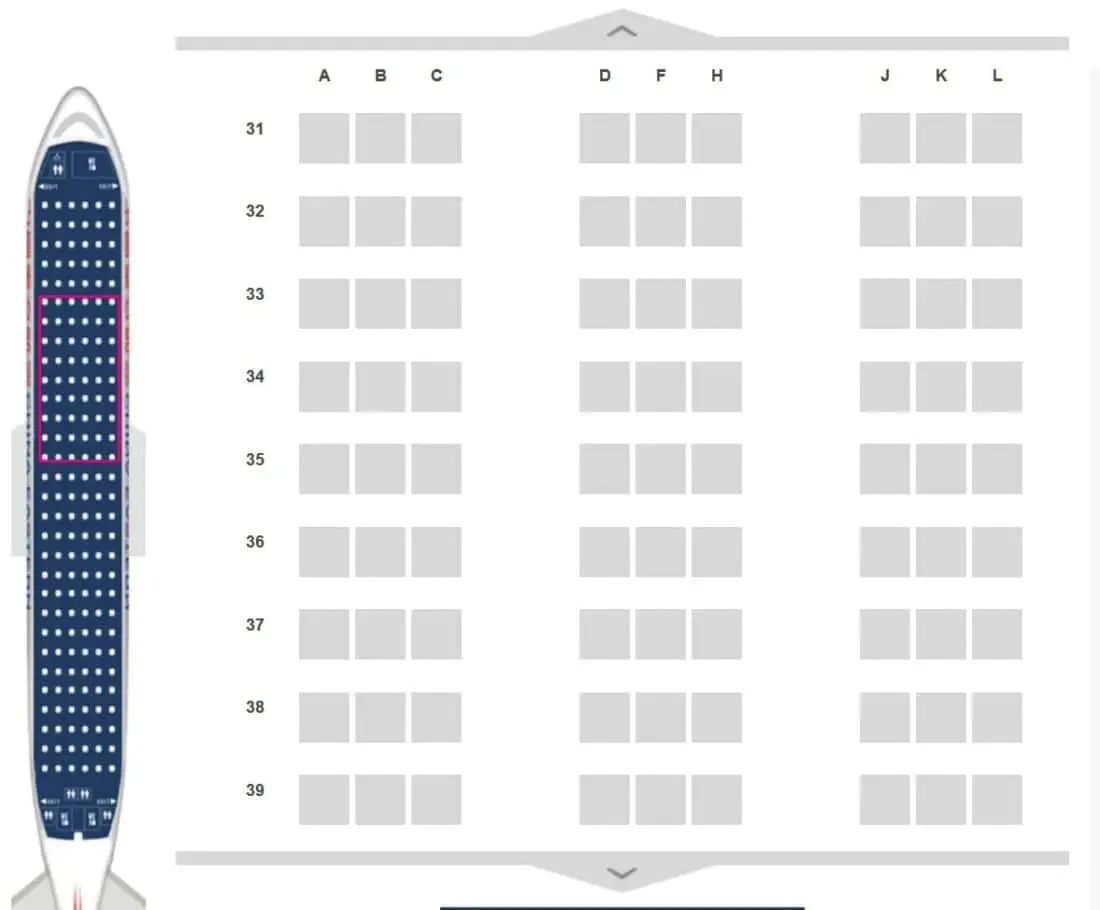
Although online check-in is theoretically available, it didn’t work for me. Both flights were simply listed as “not eligible for check-in.” It’s possible that all international bookings are excluded from online check-in.
Check-in
I arrived in Budapest around midday on a flight from Bucharest, leaving me with several hours to pass. The public areas of the airport aren’t particularly pleasant, but the observation deck is worth a visit.
The check-in counter for the Ningbo flight opened precisely three hours before departure. There’s a separate SkyPriority line for business-class guests and frequent flyers. However, it was initially hard to spot because the screens hadn’t been turned on yet. As a result, some economy passengers mistakenly lined up there before being redirected to their designated queue.
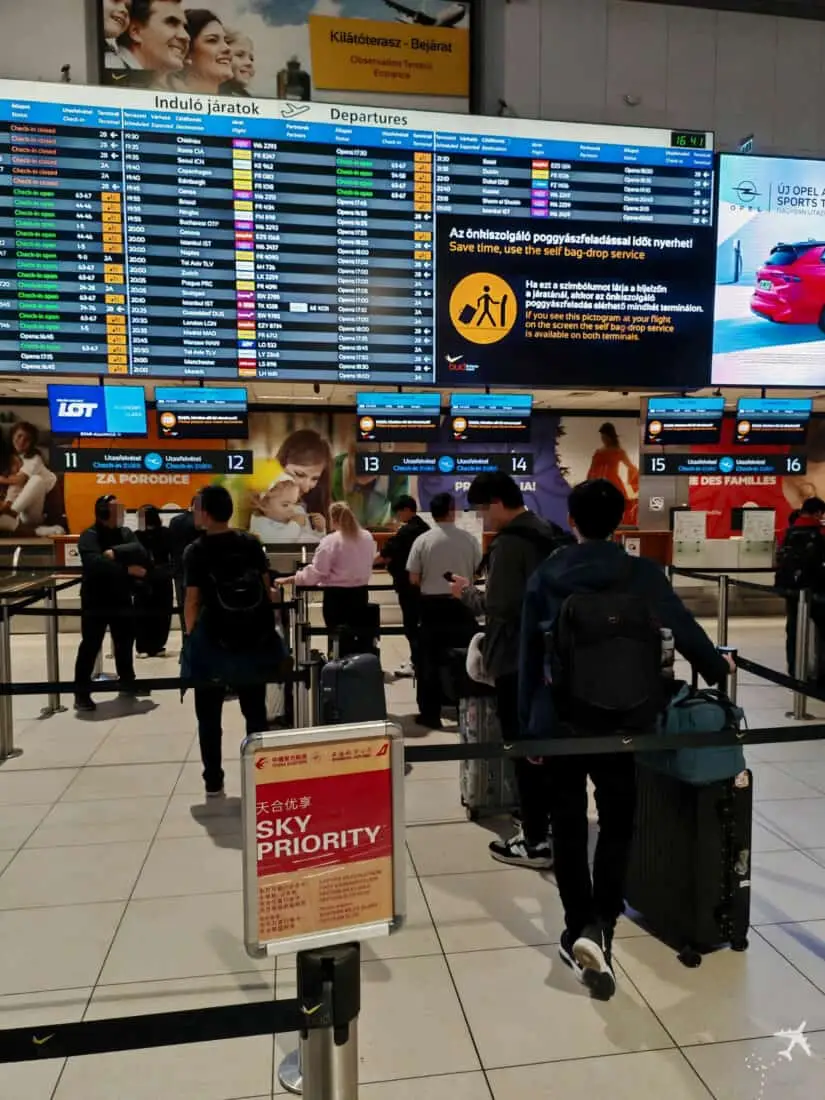
While the regular economy line was surprisingly crowded, I got my boarding pass at the priority counter within a few minutes. However, there was a catch: China Eastern’s system doesn’t seem to recognize SAS status yet. This meant I couldn’t use the Fast Track lane and didn’t receive a lounge voucher.
Since I could access the same lounge (Plaza Premium Non-Schengen) with my Priority Pass, it didn’t bother me too much. Still, I hope China Eastern gets its system sorted out soon, as SAS has been part of SkyTeam for over two months now.
Once you’ve checked in at the counter, seat changes can no longer be made online—whether three hours or one hour before departure. The seat map also becomes inaccessible online and can only be viewed via third-party tools. If you want to switch seats last minute (e.g. hoping for an empty middle seat), you’ll need to do so at the gate.
Boarding
Just like check-in, boarding began precisely on time. The SkyPriority line was once again quite short, allowing me to be among the first 10 passengers to board. Unfortunately, my boarding pass was torn at the gate, leaving me with just the small stub without a barcode for my collection.
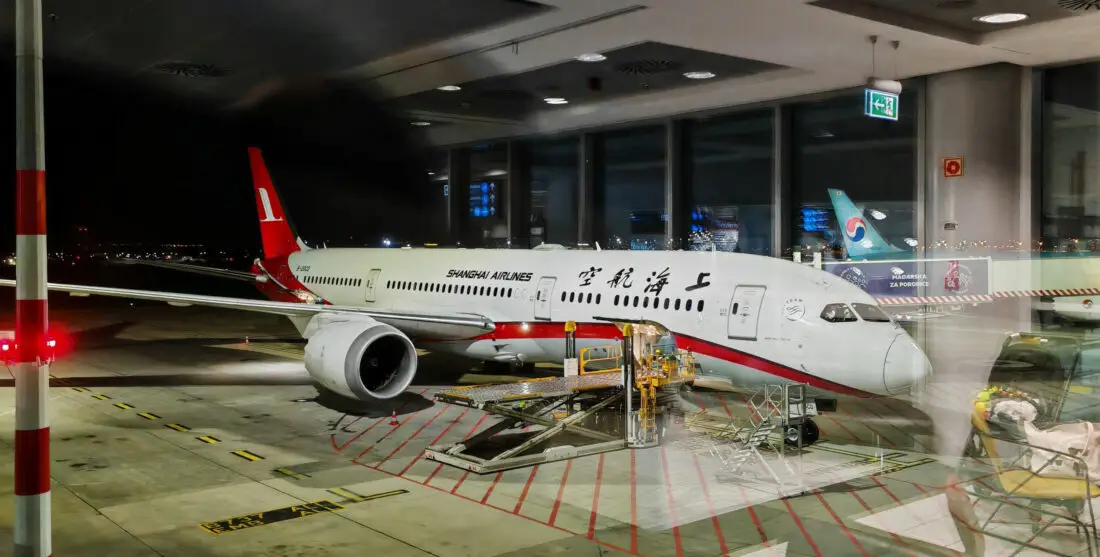
When the announcement for “boarding completed” came, I was in luck—the seat next to me remained empty. Perfect conditions for the 11-hour flight to Ningbo!
Cabin
The Boeing 787-9s operated by Shanghai Airlines feature a three-class configuration. I would have loved to sit in the business class, which offers the Vantage XL seat that I highly appreciate. Behind the 30 business class seats is the premium economy section in a 2-3-2 layout.
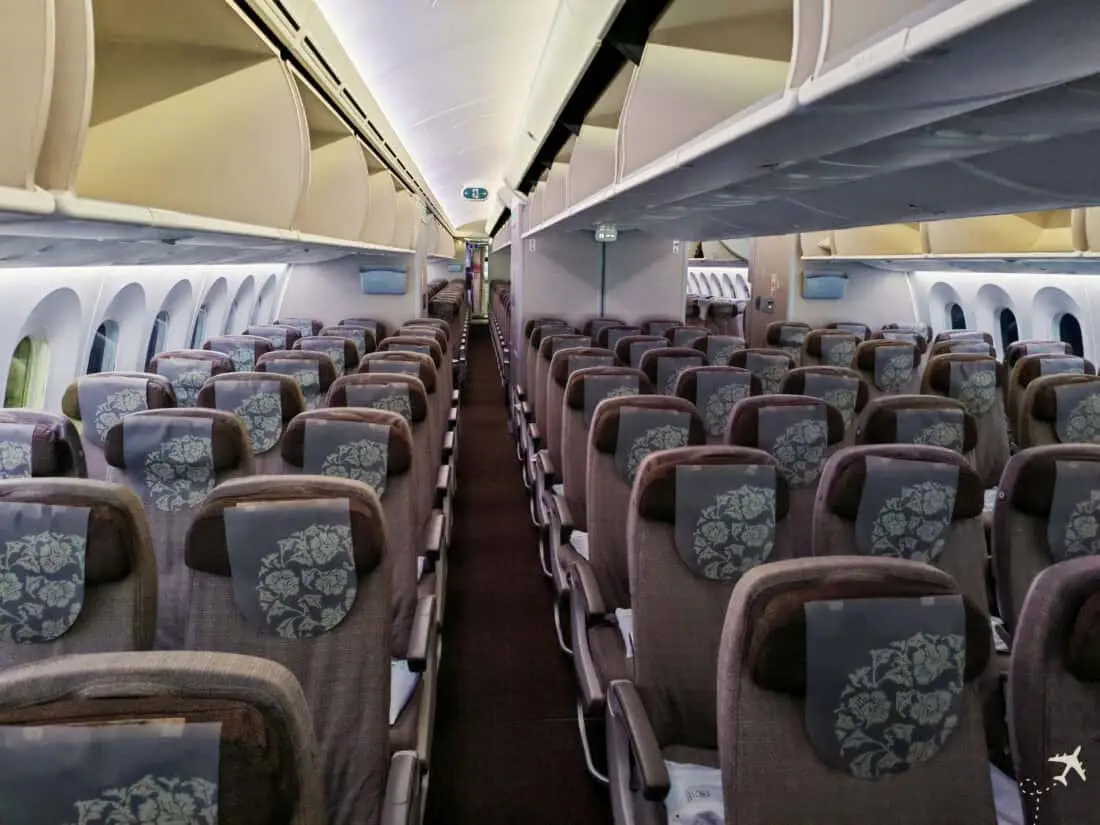
That leaves economy class. Unfortunately, JAL remains the only airline to offer a 2-4-2 configuration in the Dreamliner. China Eastern follows the standard 3-3-3 layout, with a seat pitch of 79 cm. There’s plenty of room for carry-on luggage, although few passengers seemed to travel with carry-on trolleys since every fare includes at least 23 kg of checked baggage.
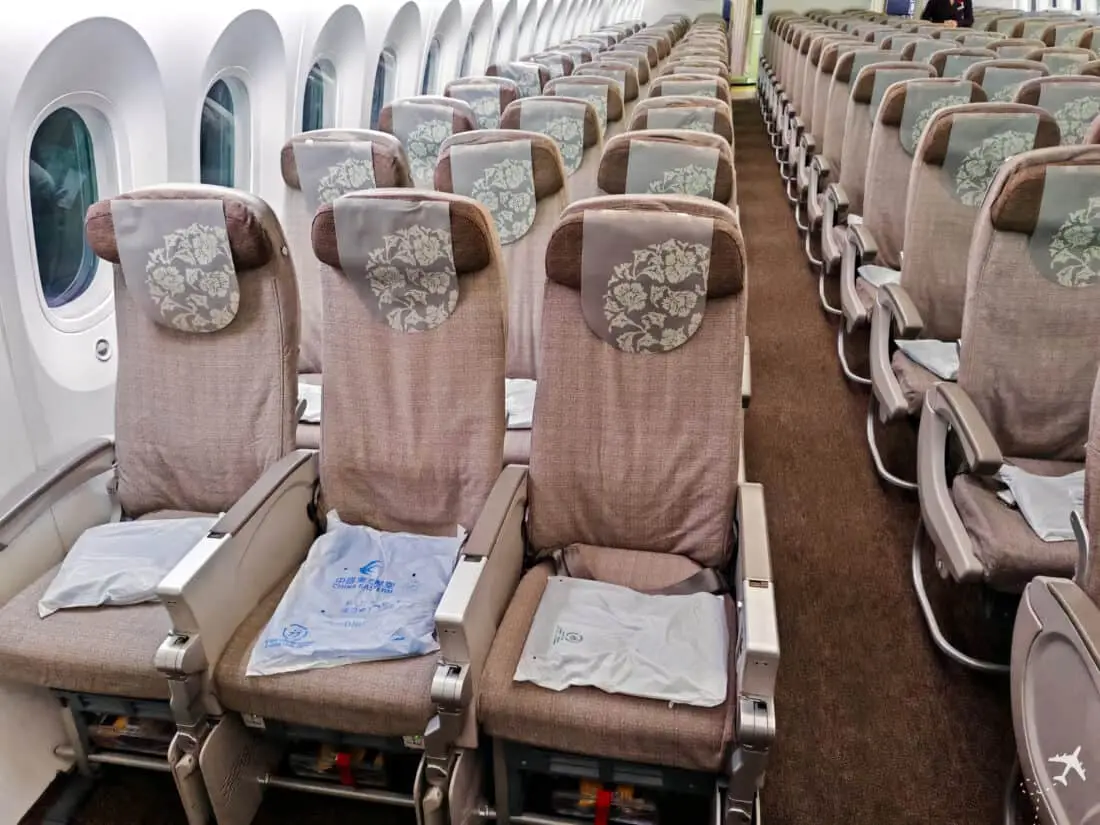
As with all Dreamliners, the windows are notably large, but there are no traditional shades. Adjustments are electronic, and controlled by buttons. However, these controls were partially restricted for most of the flight: the brightest setting without dimming was unavailable. That said, it was mostly dark outside anyway, so there wasn’t much to see.
Seat
When reviewing business class, I often go into great detail about the seat. In the case of economy class, there’s significantly less to discuss, as the ways to combine seat cushions, backrests, and tray tables are inherently limited.
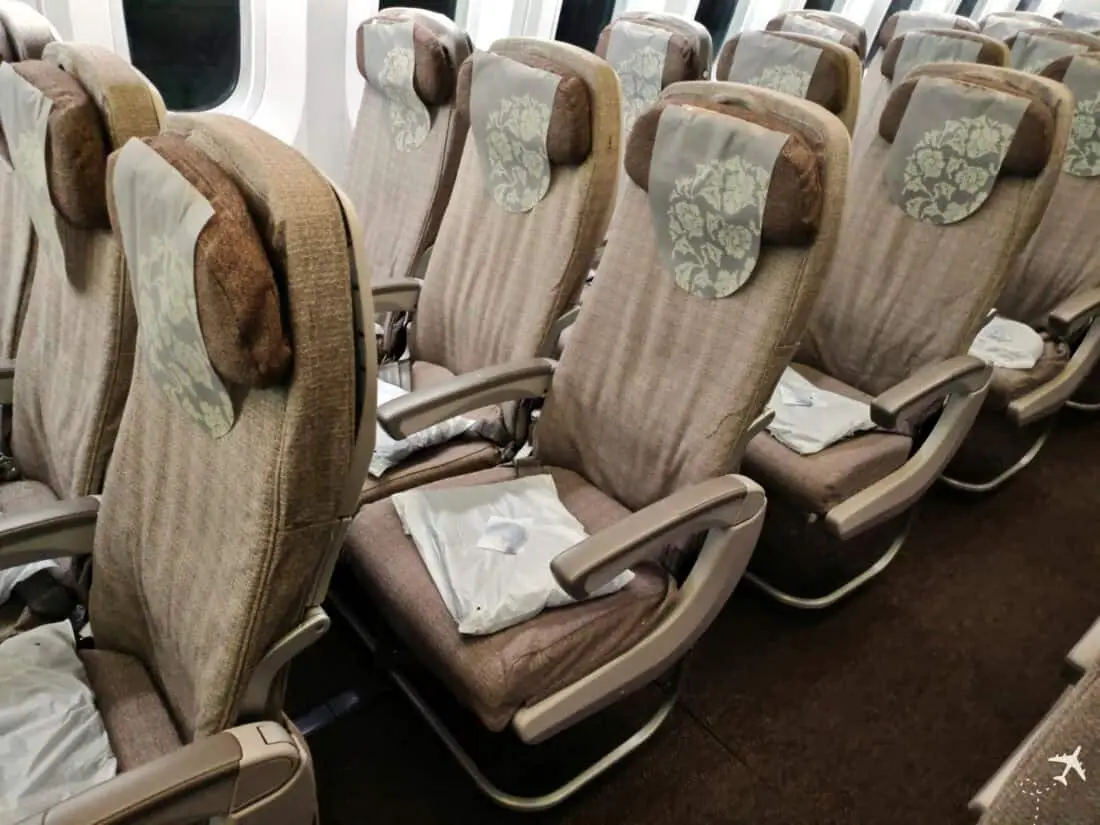
Shanghai Airlines equips their Dreamliners with seats from the Collins Aerospace Pinnacle platform. This platform offers a wide range of variations—from a camping chair for short-haul flights to a reasonably comfortable long-haul seat. If you happen to run an airline, you can consult the datasheet directly from the manufacturer.
Shanghai Airlines, however, goes all-in, selecting nearly every add-on available:
- 4-way adjustable headrest (up, down, left wing, right wing?)
- Power outlet and USB charging port at every seat
- Coat hook
- 11.7″ IFE screen
Admittedly, these are features one mostly expects on a long-haul aircraft. What truly surprised me, however, was the power outlet. I had frantically charged my power bank in the lounge to avoid running out of juice. Even European airlines don’t offer universal power outlets—and if they do, it’s often two outlets for three seats.
Additionally, there’s another USB-A charging port by the power outlet. However, it’s so inconveniently placed that the USB port on the entertainment screen is a better choice.
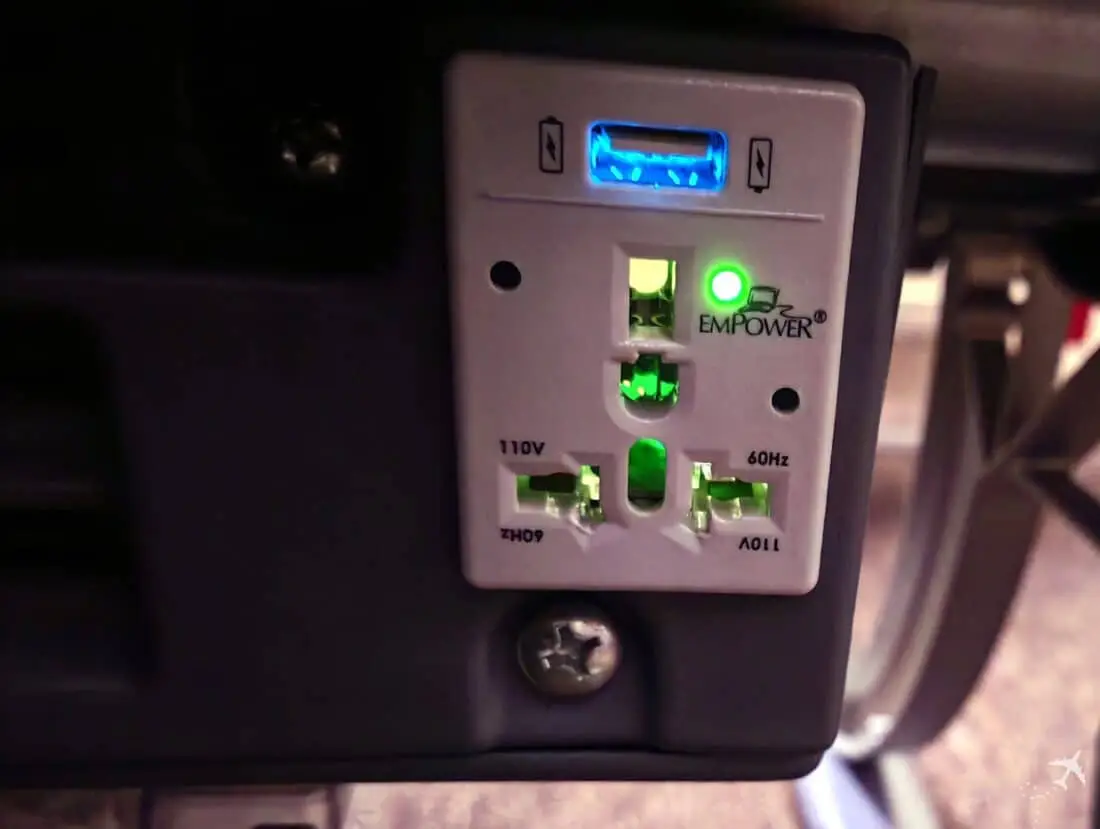
A design flaw, though, is the tray table. It has a two-tier design, which isn’t a bad idea in itself. The half-size table is fine for drinks, and you can fully extend it if needed. But in my case, the table was so worn out that it tilted forward, causing the tray to slide toward me constantly. Additionally, it can’t be pulled very far forward, making it difficult to work on a laptop.
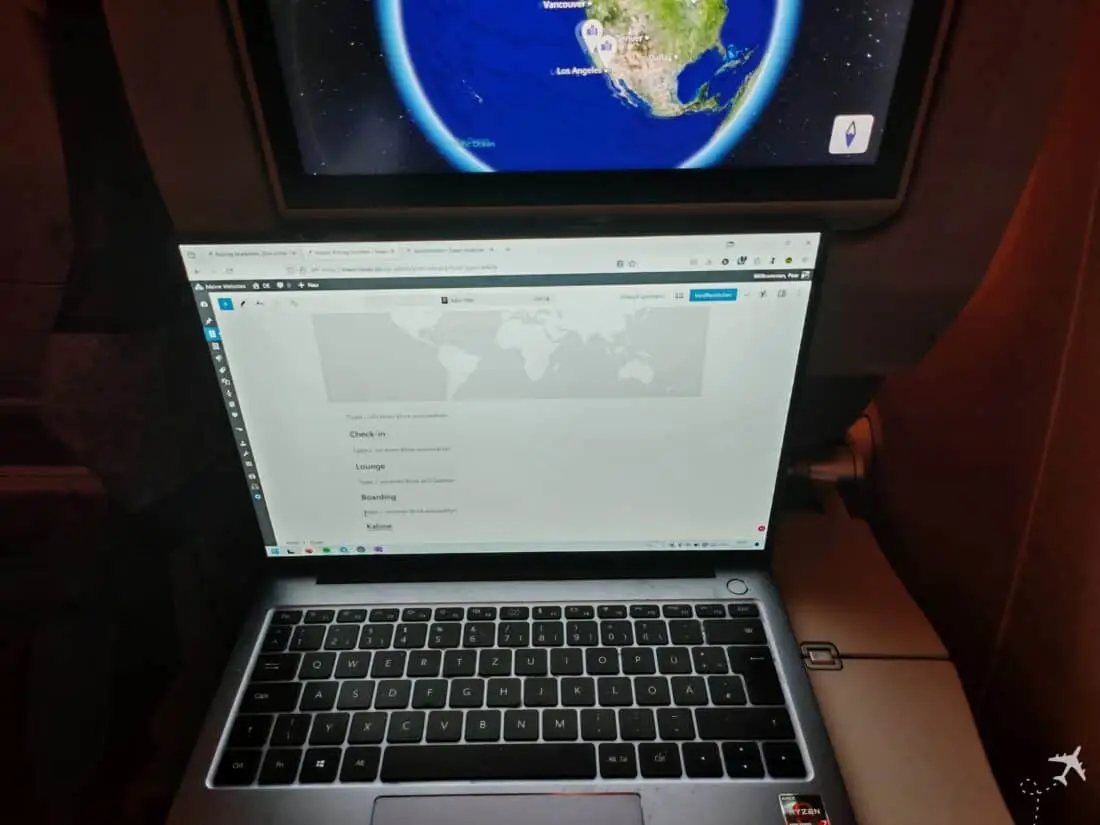
Seat Comfort
When I first sit down in an economy seat, my initial reaction is often: “The legroom seems decent.” But as the flight progresses and I start sliding forward, my knees inevitably end up pressed against the seat pocket.
This flight began the same way. However, the legroom actually remained fairly comfortable throughout the 11-hour journey. It’s not as though I had miles of space to the seat in front, but two to three centimetres of distance from the seat pocket is often enough to avoid constant contact. I had this much space even in a reasonably relaxed sitting position—and that’s saying something, given my 1.98m height.
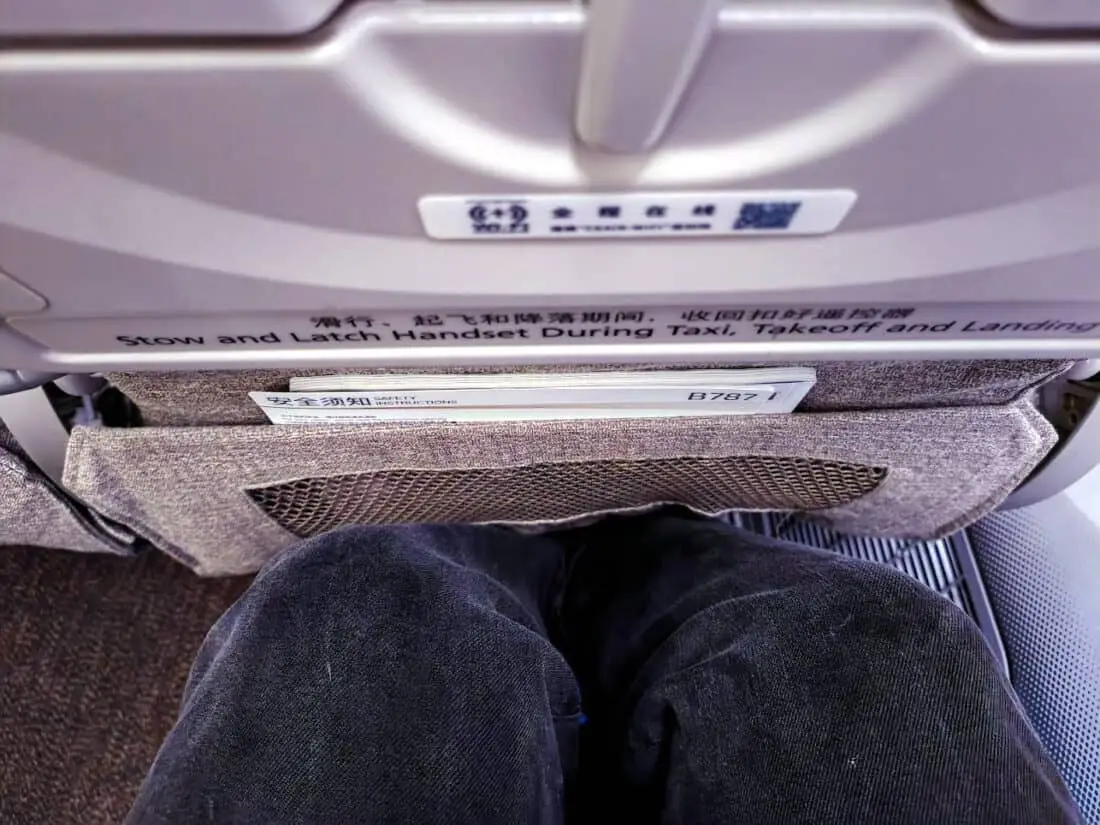
For comparison, here’s what it looked like on Lufthansa’s Airbus A350. Despite both airlines officially offering the same seat pitch of 79 cm:
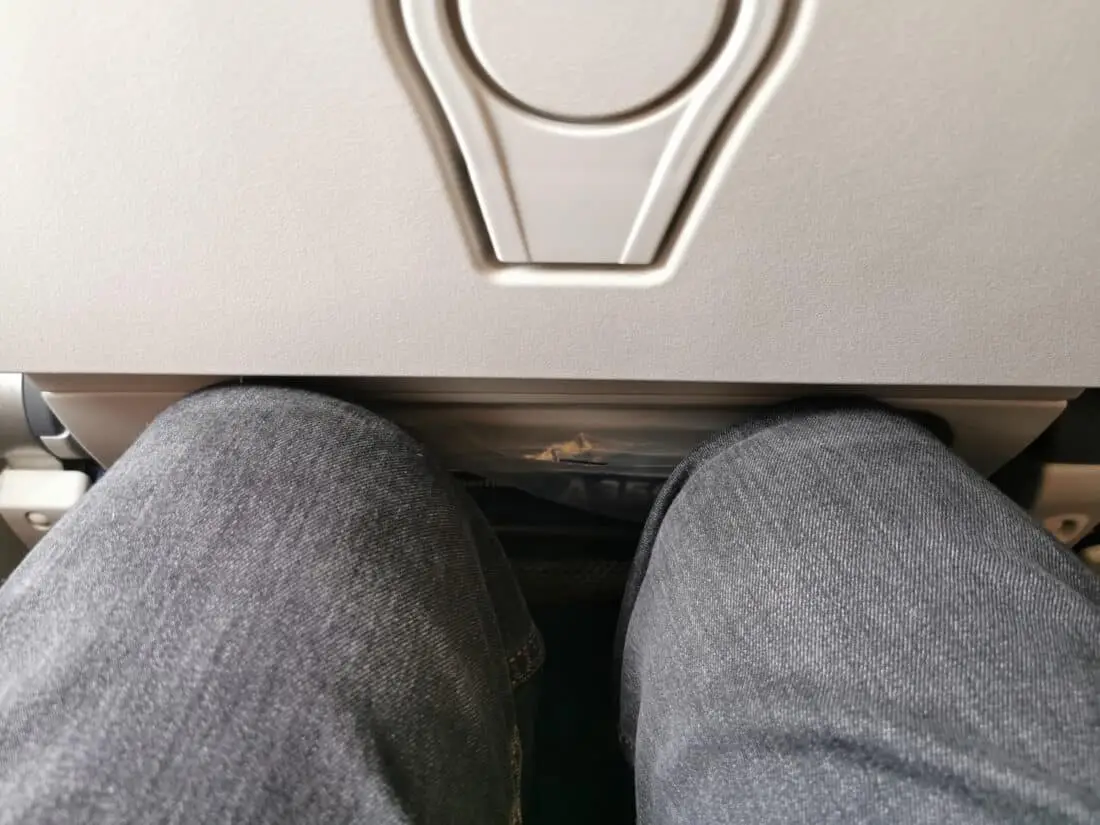
Even though the backrest on Shanghai Airlines’ seats is relatively thin (a necessity to achieve extra legroom), it was adequately comfortable. The recline was also decent, without overly inconveniencing the passenger behind me. I took advantage of the opportunity to lean against the wall to sleep. For other passengers, the adjustable “wings” on the headrest provide some support.
The armrests were sufficiently wide, leaving only one “issue”—the narrow seats. A 3-3-3 configuration in a Dreamliner is standard across most airlines, but the 44 cm seat width is a drawback. The slightly wider 46 cm seats in an A350’s economy cabin are noticeably better.
This narrowness is most apparent in the aisle seats, where passengers are often bumped by people passing by. Yet another reason to prefer a window seat. Fortunately, these issues were less relevant on my flight. The seat next to me remained empty, allowing me to simply raise the armrest for more space.
Food & Drinks
After takeoff, the first beverage round included options like Coke, Coke Zero, and similar drinks. For dinner, other passengers were asked to choose between pasta, beef, or seafood rice. By the time they got to me, my choices were reduced to pasta or beef. Perhaps my reputation for consuming beef precedes me?
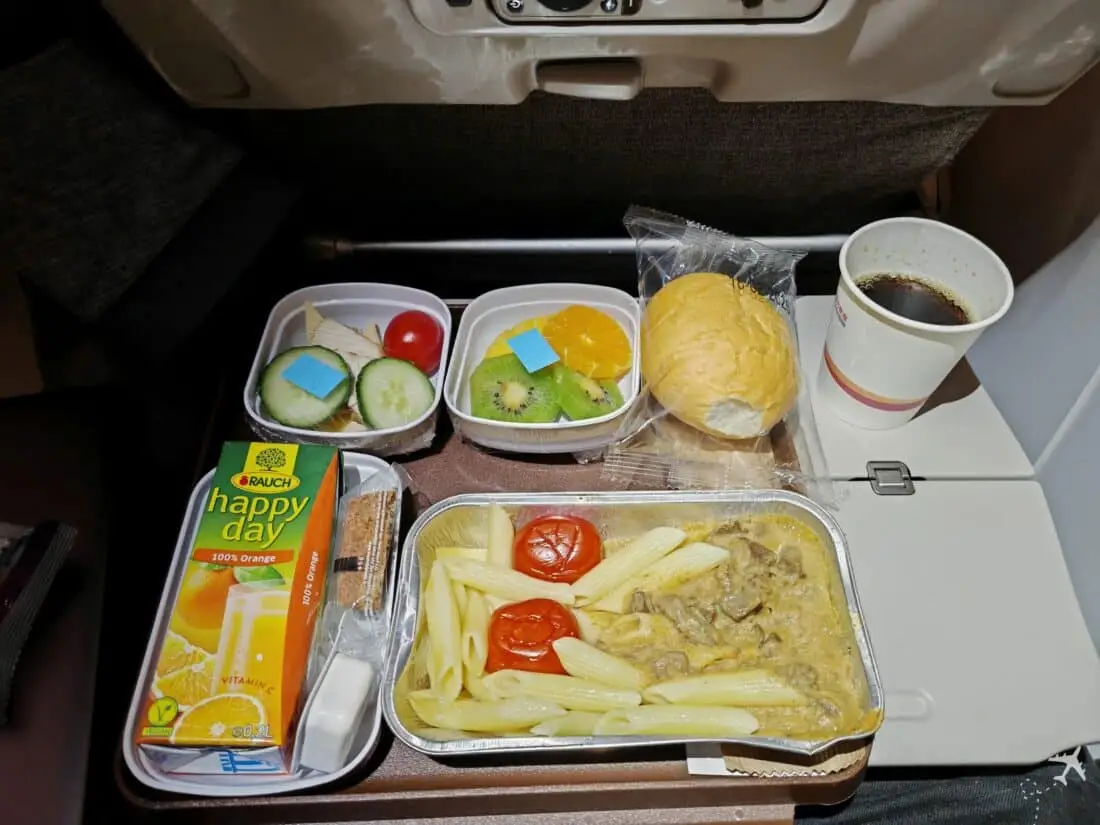
As much as I enjoy saying yes to steak, Japanese BBQ, and the like, the beef on this flight was underwhelming. It didn’t taste as bad as it looked, but I’d rate it a modest 2.5 out of 5. The salad and fruit, however, were passable.
A roll was also served with the meal. While some airlines present bread rolls with the density of a rock, this one has the texture of cotton candy. Surprisingly, it tasted quite good. The same cannot be said for the “Basic Spread,” a butter substitute with only 35% fat. It lived up to its name, offering a stark reminder of the realities of the economy class. I hope premium passengers at least receive a “Premium Spread” or the delightful Swiss butter some airlines offer.

One thing was notably missing—a dessert. Despite my patience, it never materialized. For those feeling peckish mid-flight, don’t bother heading to the galley. Unlike other airlines that provide drinks, fruit, and snacks there, a “Staff Only” sign made it clear passengers weren’t welcome. Perhaps asking directly would have worked, but it didn’t seem worth the effort.
A second beverage round was served later, and the flight attendants passed through the aisles three or four more times with water bottles. For anything else, you’d have to press the call button.
About two and a half hours before landing, the crew began serving breakfast. I heard the choice was between “omelette” and “chicken crunchy,” though it quickly became clear this was a misunderstanding. It was actually “chicken congee”—a bland Chinese rice porridge (wiki). That mix-up is on me; such a misunderstanding probably wouldn’t have happened on Lufthansa. Still, it’s experiences like these that make travelling unique.
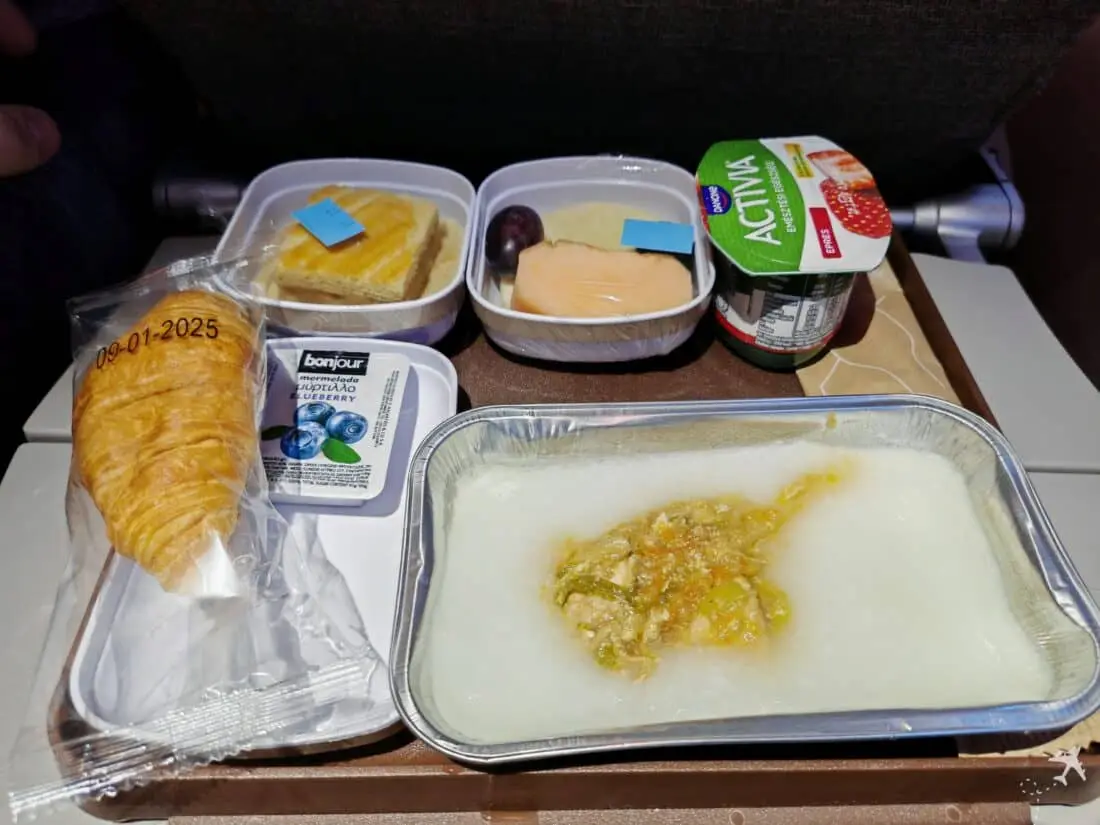
Although its appearance and texture were a bit off-putting, the chicken in the congee was surprisingly flavorful. The yoghurt was good, and the croissant served alongside was decent for economy-class standards. And there it was—the missing dessert from dinner: an apple cake. Overall, the breakfast was better than what many Western airlines offer.
Service
While most East Asian airlines (from Korea, Japan, and Taiwan) are renowned for their excellent service, this reputation applies only to a limited extent for carriers from mainland China. That said, there isn’t much that can go wrong in economy class. One notable positive was the regular inspection of the lavatories, roughly after every two passengers.
Most of the staff could communicate in English, and requests for items like pillows or extra drinks were fulfilled whenever possible—and impressively quickly. For instance, when I pressed the call button for a glass of water, a flight attendant was at my seat within two seconds.
However, the crew sometimes felt more like supervisors than service providers, e.g. when seated at the jump seat at the front, they watched passengers intently, almost scrutinizingly. While vigilance is part of their role, other airlines manage to do so in a less conspicuous manner.
In-Flight Entertainment
Shanghai Airlines/China Eastern opted for a premium setup in their in-flight entertainment system, featuring an 11.7″ touchscreen—a significant upgrade from the usual 9″ displays.
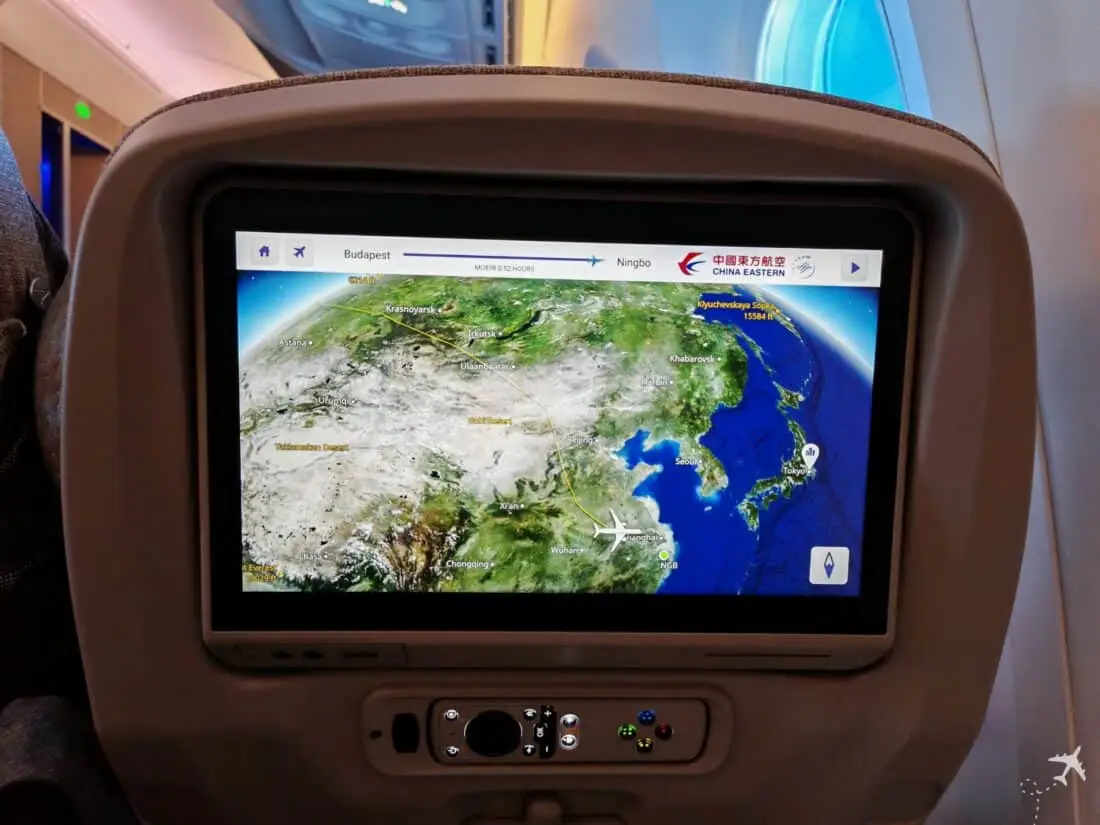
Unfortunately, the content selection didn’t match the quality of the hardware. The “International” category featured only six films, while “Hollywood” offered around 20. However, their definition of Hollywood blockbusters included titles like Tom & Jerry and My Little Pony, leaving even fewer actual cinema films.
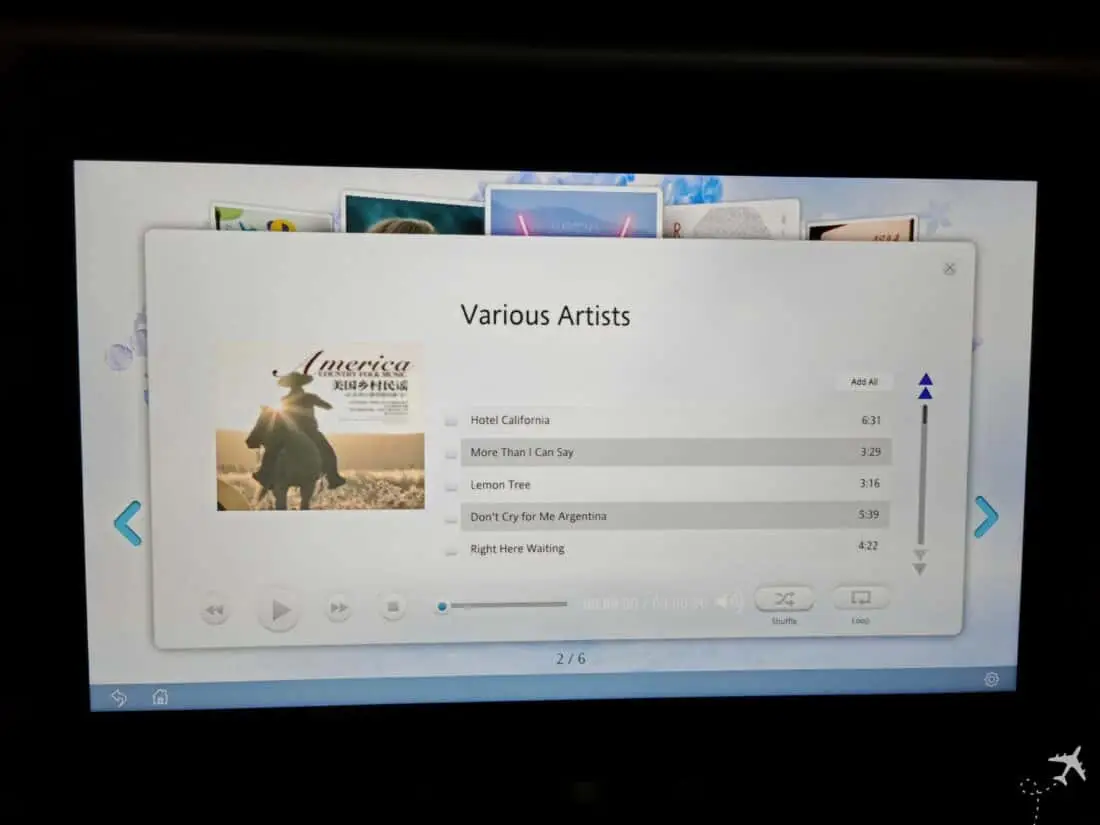
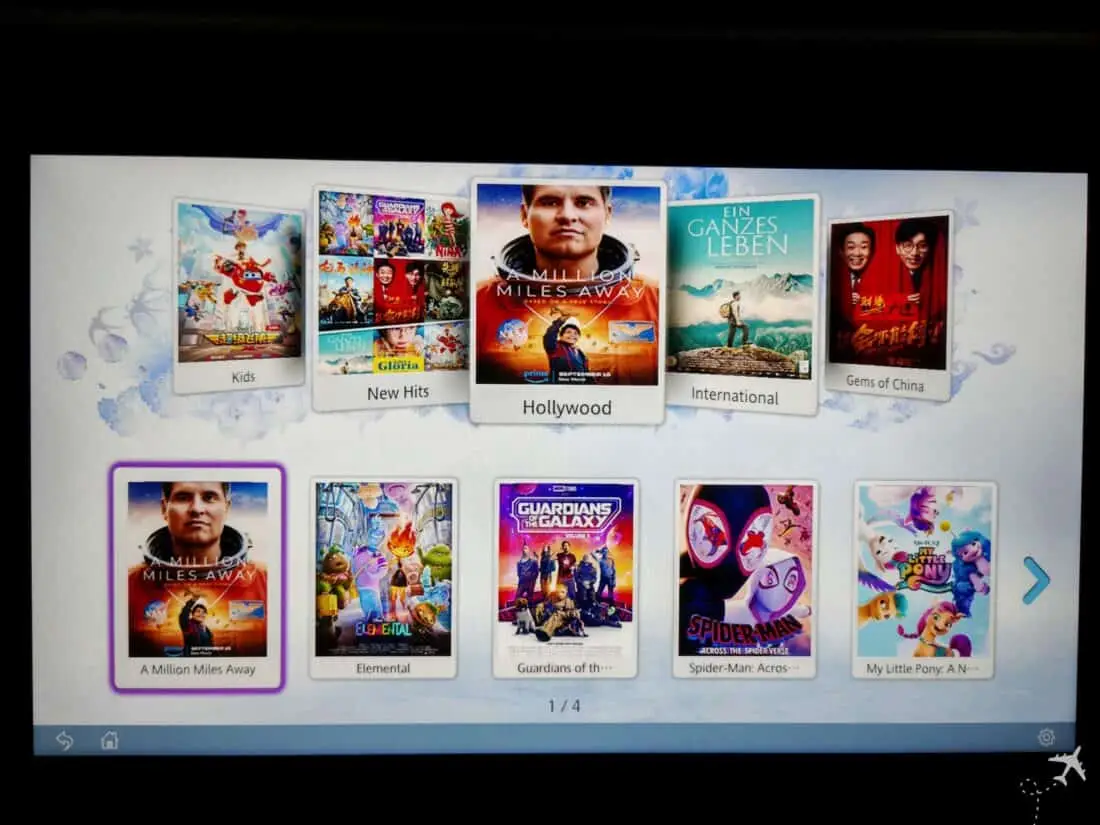
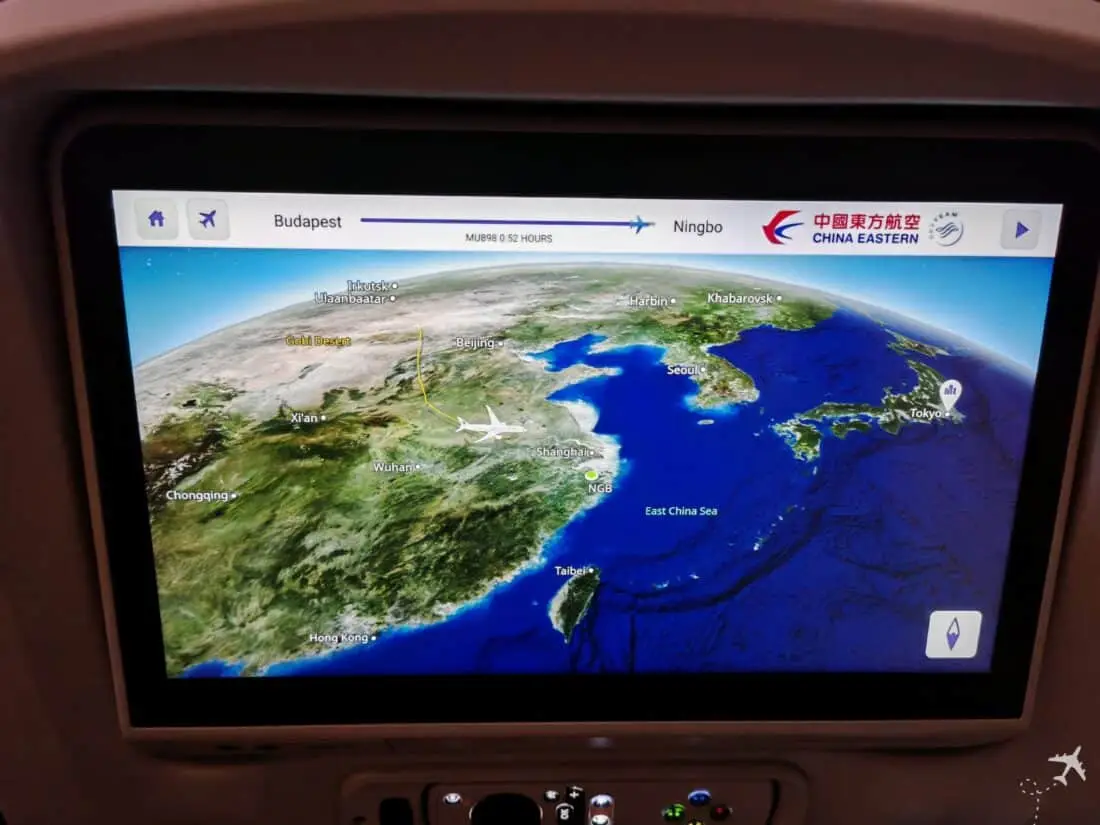
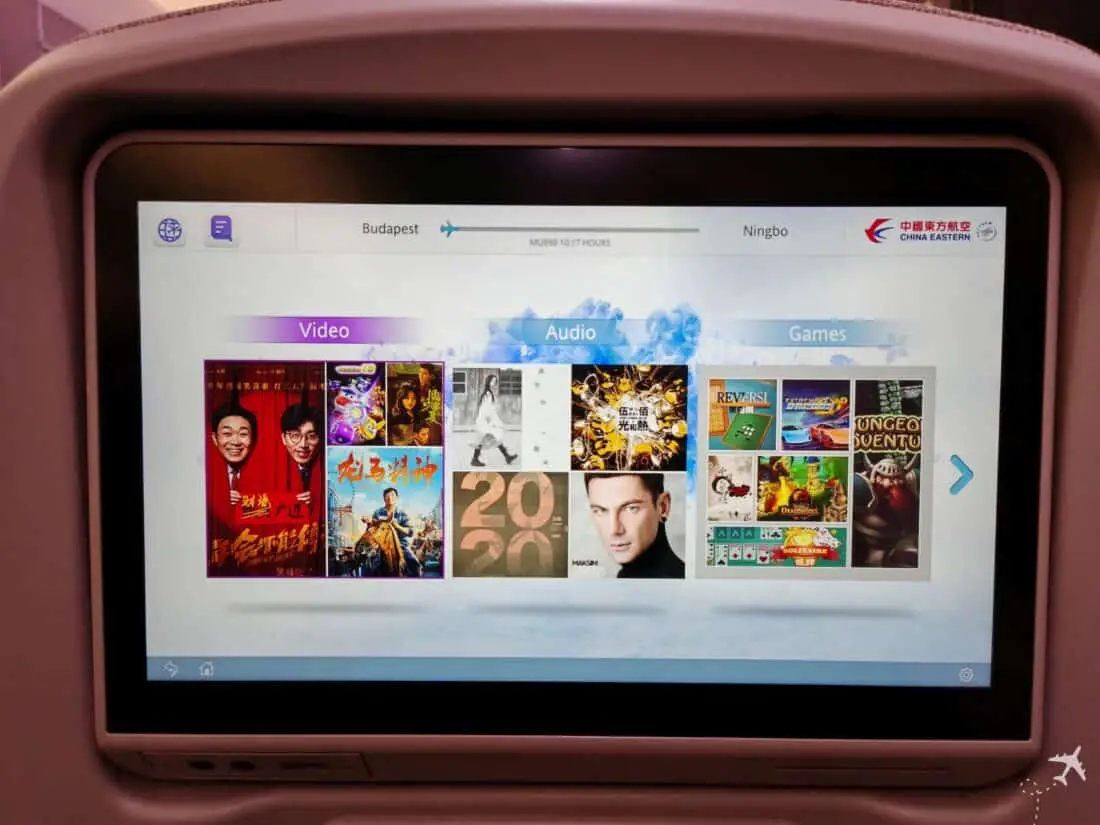
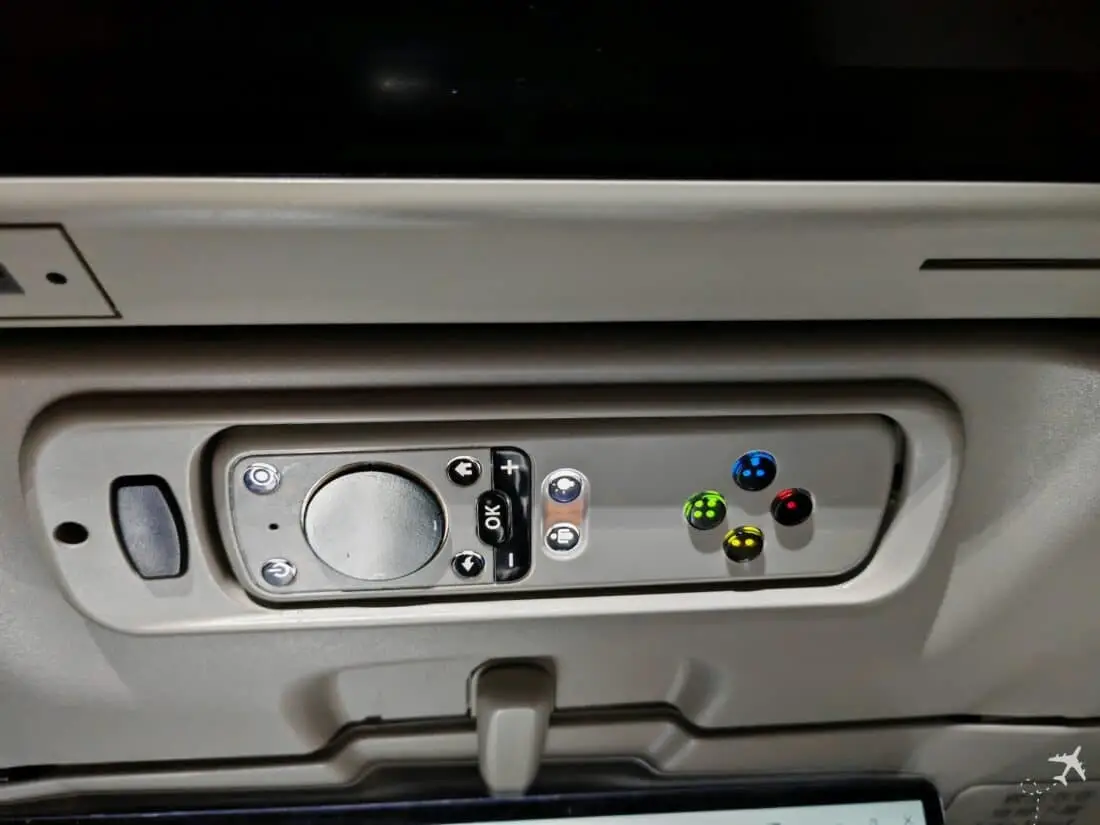
The games menu, while present, was completely empty, rendering the gaming buttons on the remote control pointless. On the brighter side, I found a unique feature: a 360° virtual tour of the plane, accessible through the screen. It’s similar to Google Street View and offers an intriguing look into areas like the cockpit:
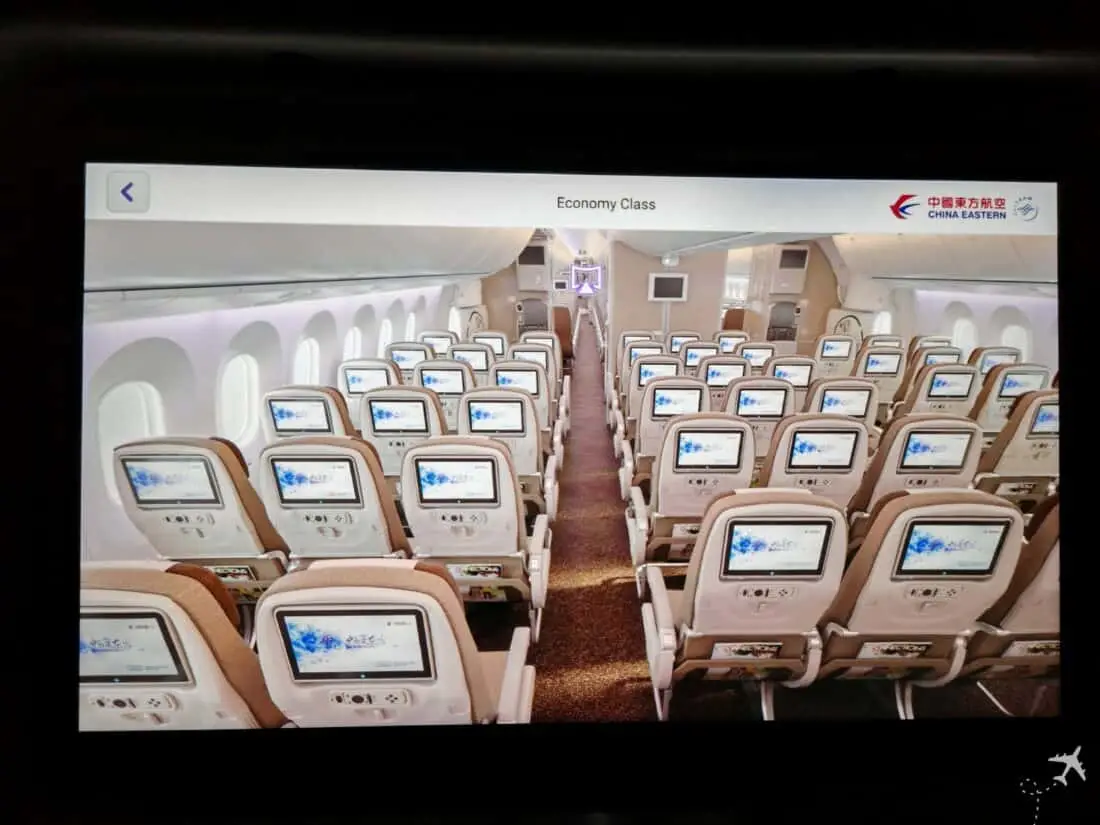
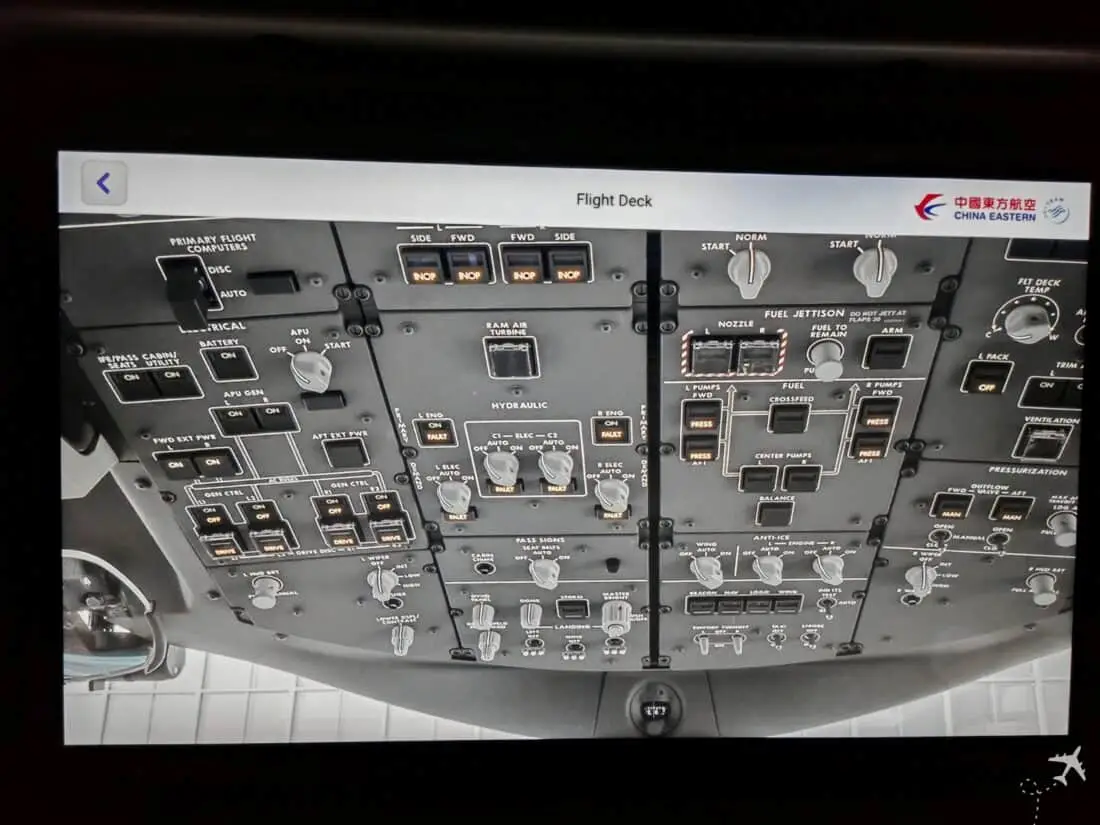
There was also a reasonable selection of music, including international tracks. Personally, I rarely watch movies on flights and spend 90% of the time with the FlightMap, which is especially enjoyable on the large screen. However, those who prefer watching films rather than sleeping might want to bring their own entertainment.
WiFi
I wasn’t expecting WiFi to be available onboard, so I was pleasantly surprised to find a network named CEAIR-WiFi.
Business class passengers could access the WiFi for free, while everyone else was offered a 10-minute free trial, after which the following packages were available for purchase:
- Standard, 1 hour: CN¥40 (~€5)
- Standard, 2 hours: CN¥70 (~€8)
- Standard, entire flight: CN¥150 (~€18)
- Premium, entire flight: CN¥258 (~€31)
I found the prices to be quite fair. However, not knowing the exact exchange rate made it challenging to gauge the cost accurately. Researching onboard wasn’t straightforward either—Google was blocked (as is common in China), Bing wasn’t functioning for me, and my VPN failed to connect.
I couldn’t conduct a speed test, but I did receive a few notifications on my phone, and browsing Travel-Dealz worked surprisingly quickly.
Extras / Miscellaneous
Each seat was initially equipped with a blanket and two-pronged headphones, but no pillow. When I requested one, I was given a surprisingly good-quality pillow with a proper fabric cover—unlike the disposable paper covers used by some airlines. Slippers were also available on request and were quite popular, with about half the passengers requesting them.
However, some amenities were missing. Most notably, there were no air vents at the seats, and the cabin was kept rather warm. To sleep more comfortably, I opted not to use the blanket. There were no toothbrushes or similar toiletries on the seats or in the lavatories, though I did find a cute aeroplane keychain in the restroom.
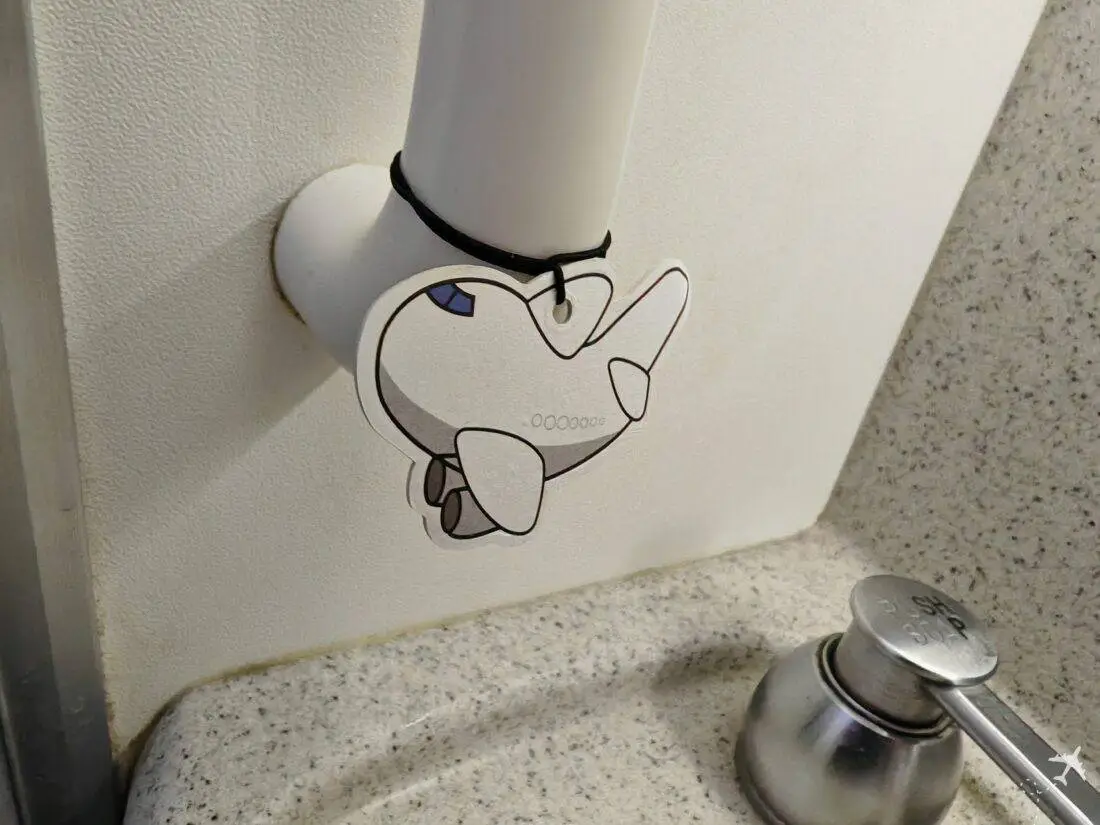
Around 10-15% of the passengers appeared to be European, while the majority were Chinese. This occasionally led to small cultural clashes—such as when I found the bare feet of the passenger behind me resting on the back of my armrest.
Layover in Ningbo & Connecting Flight
The transfer process in Ningbo was surprisingly smooth. I didn’t find anyone at the international transfer desk, but I had to clear immigration anyway for my connecting flight to Guangzhou.
To enter China, passengers must complete a paper landing card. It’s tricky to fill out truthfully when the field for “countries visited in the last two years” only allows space for 10 entries:

Overall, it took me less than 30 minutes from deplaning to clearing immigration and security and sitting in the lounge at the departure area.

The China Eastern lounge was a gloomy space offering little more than a few sandwiches and drinks. For Priority Pass holders, I recommend the Yongi VIP Room at the terminal’s end. Although it had even fewer food options, it offered a much brighter atmosphere with plenty of natural light.
The flight to Guangzhou was operated with an A320. Due to the thicker seatbacks, the legroom was noticeably tighter but still just acceptable. On the bright side, the fried rice served during the short two-hour flight was surprisingly tasty.
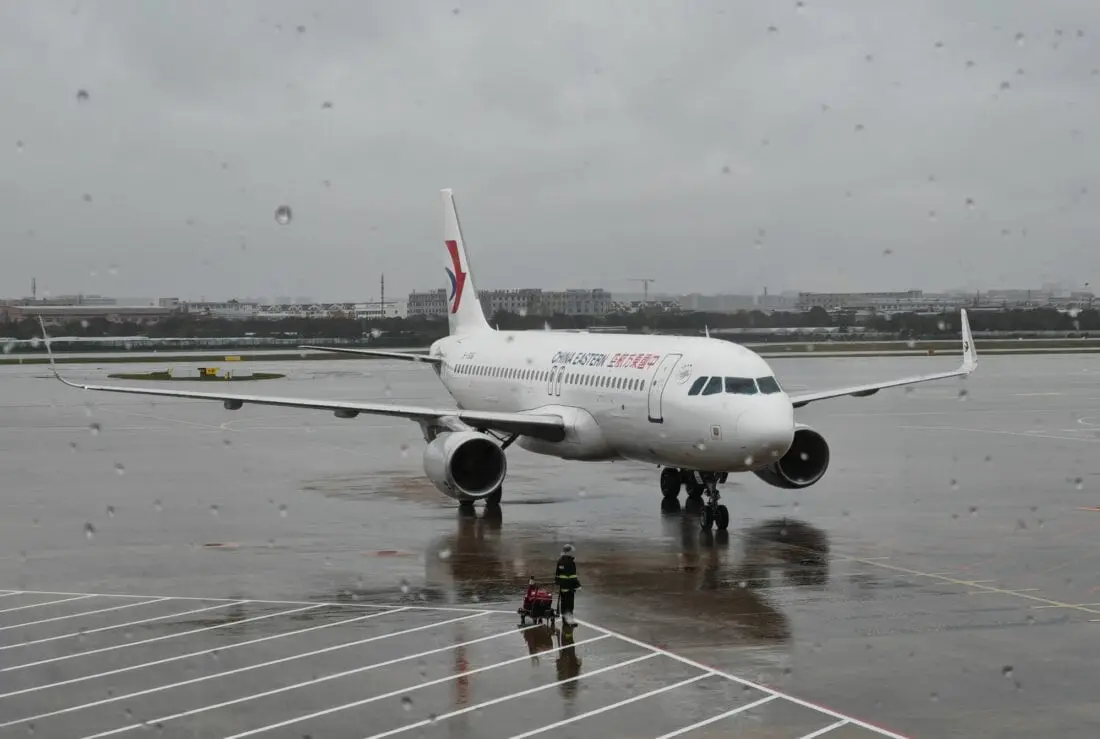
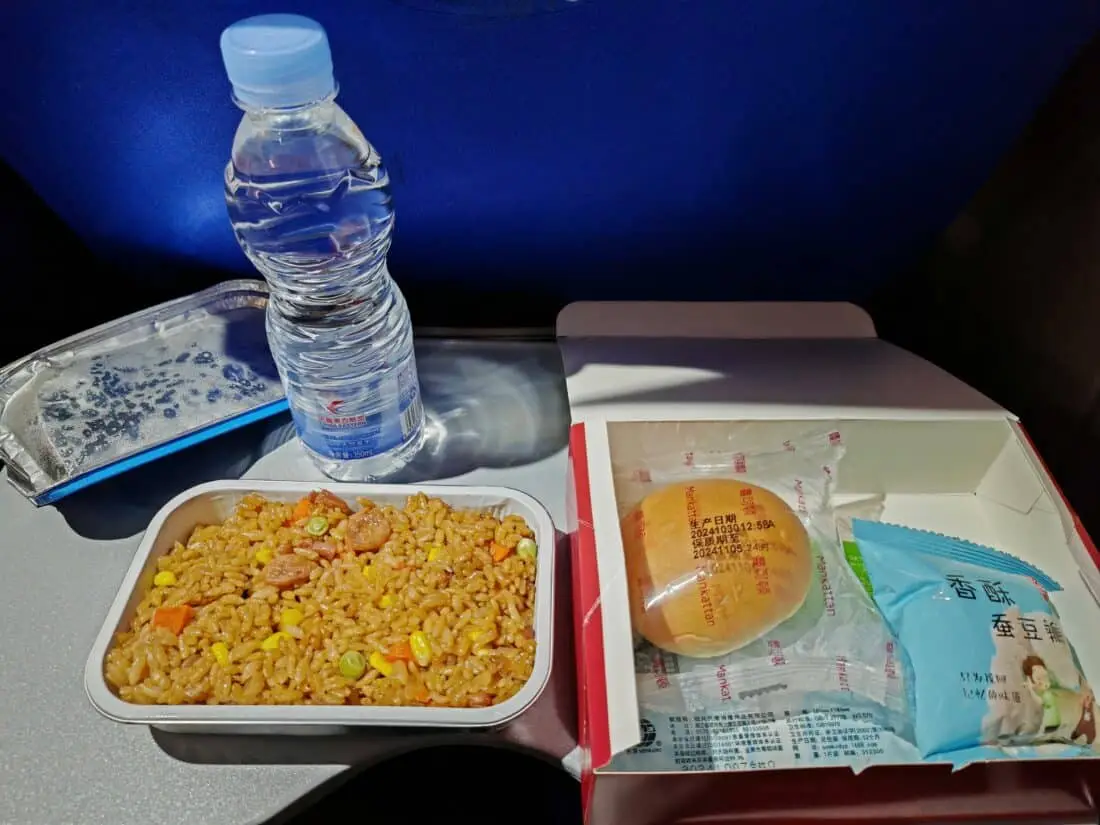
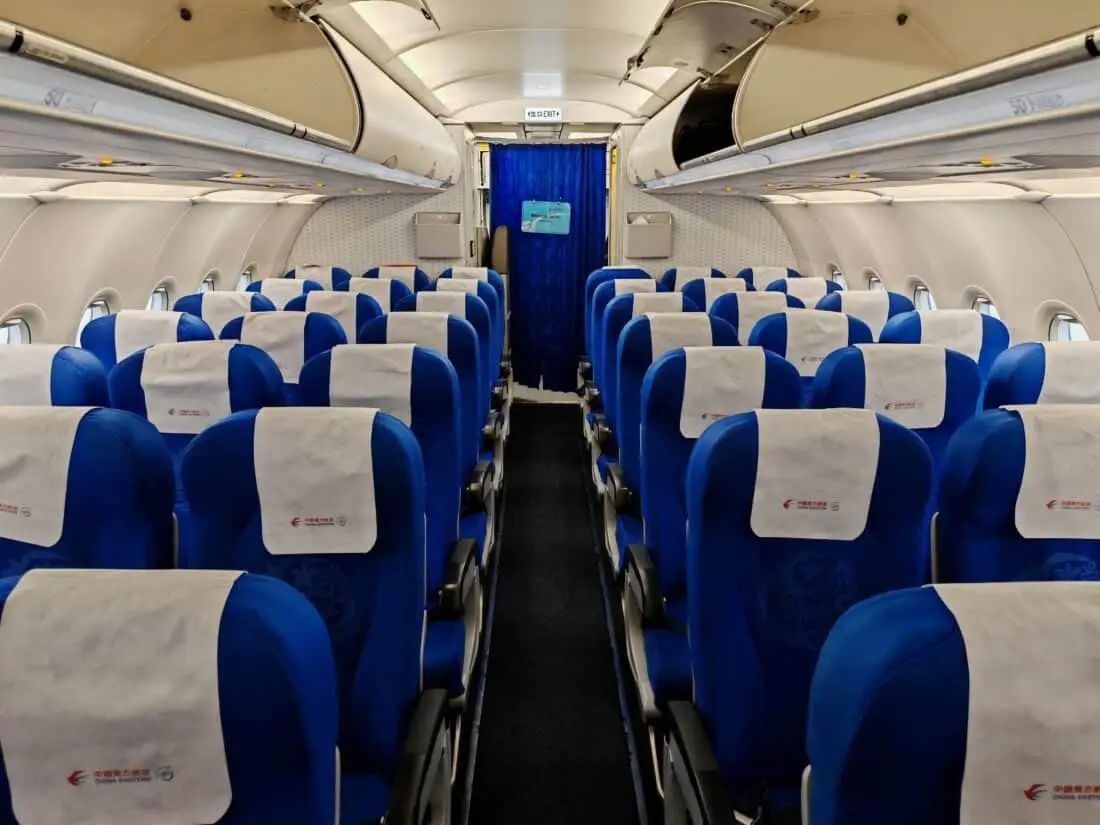
Conclusion
- Check-in & Boarding
- Seat
- Food & Drinks
- Service
- In-Flight Entertainment
- Extras & WiFi
On long-haul flights in recent years, I’ve almost exclusively flown with airlines that offer complimentary extra-legroom seats to status customers. After enduring 8 hours of having my knees against the seat in front (Frankfurt to Toronto with Lufthansa), I swore at the start of 2022: From now on, only exit rows or Economy Plus. What I hadn’t accounted for, though, was SAS’s legendary mileage promotion.
After this flight, I must say: it wasn’t bad at all. China Eastern offers a solid overall economy-class product that doesn’t need to shy away from European competition. What surprised me most was the relatively high level of seating comfort. Despite the “just” 79 cm of pitch on paper, I felt significantly more comfortable than in the standard seats of LOT, Lufthansa, Air Canada, and the like. Even without an empty middle seat, it would have been manageable.
And while I personally support the sanctions against Russia, the flight route over Russian airspace saves up to 2 hours of travel time. In business class, I’m happy to take longer routes. But in economy class, the shorter flight time is undoubtedly a big advantage.
Translated by Ditmar
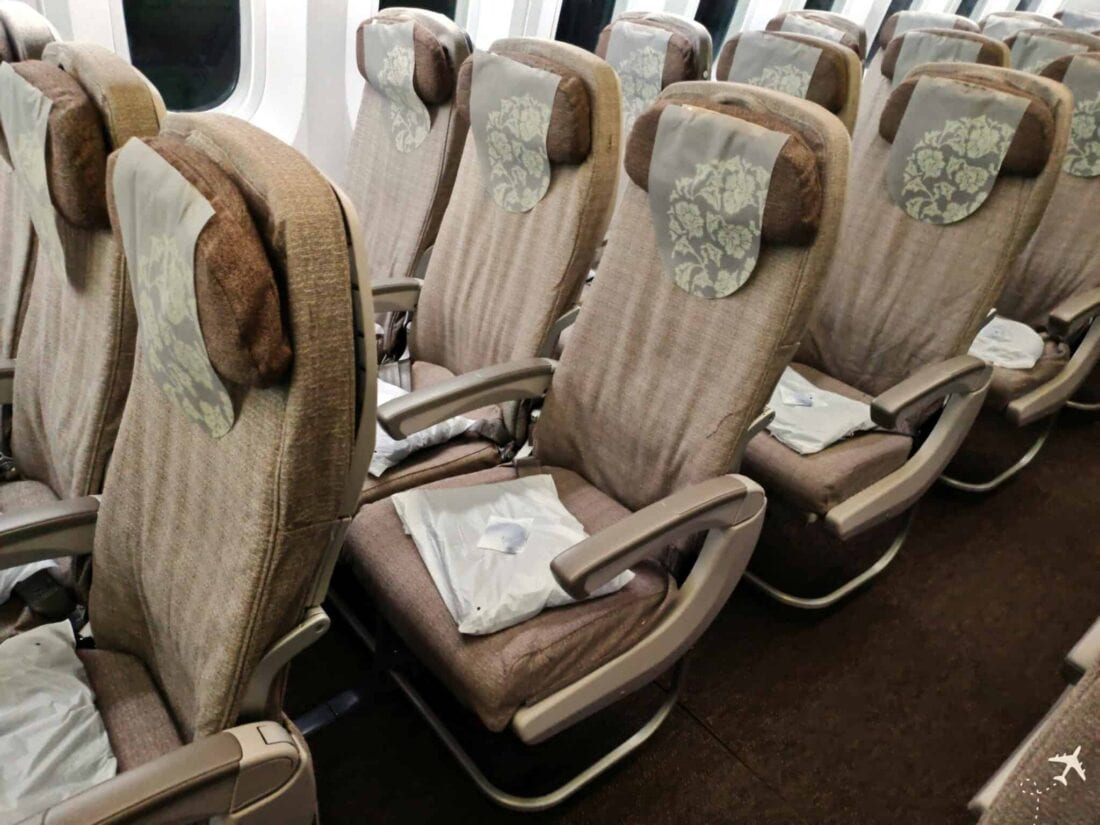
Comments (4)
I recently flew premium eco w them …
Except the space and the very good price anything else was quite bad
No noise cancelling headphones as in other premium ecos, just the very cheapest in earphones
Food was a disaster
Could not watch any movies, not exactly sure why but with this cheap earphones would not have been much of a pleasure
There were two bathrooms more less for premium eco only, they were much bigger and much nicer than on any other airline
Check in in China is a nightmare
They take everything apart and hunt for your lighters.. not sure why they have such a fetish in any other airport it’s not an issue
And you can even make a big fire when short cutting your battery pack
I had similar good/better trip in 2020: Budapest to Shanghai New Years’ Day 2020. Flew on a newer B787-9. They had opened not less than 8 check-in counters in Budapest of which 4 are for Sky Priority only; thus very comfortable. BPs issued immediately including the following flight with China Eastern the routing PVG-HKG count as international flight. As being Flying Blue Silver I was accessed to Sky Priority counters and was checked in in a few Minutes; prioritised in all queues and boarding, and eventually (at gate) upgraded from Economy to Economy Plus as flight was full in lower classes and in business. I was lucky not to have my original selected (and given) seat economy has become full after check-in. Trip went smooth, captain made kind announcements. FAs were also kind and firm though listening more than being proactive. Very frequent water rounds every 30 Minutes. Lots of food, but they ran out of wine and beers within an hour after departure. Very embarrassing but quite typical for Chinese airlines (apart from Cathay Pacific?). Bought own supplies of champagne from airport. FA off course accepted it as they know they are running short, especially on a New Years’ Day. I brought my own glasses and let them chill down my champagnes. Good food, two full hot meal rounds with options. Catered from Budapest, thus Western oriented unlike when departing from Shanghai. I had at least 6 hot meals on board (many were meals in excess as passengers were stuffed after New Year) and could have had more if I could manage. At breakfast service, still 24 dinner meals were left. Clean toilets throughout. Blankets and earplugs provided. Individual IFE was extremely good and technically the best I have seen in the skies. Content limited to some 15 Western movies but that suffices as their choice goes beyond the most popular Hollywood stuff. Simultaneously, plenum monitors display the current flight data and maps. Arrived 25 Minutes early in the huge, completely over-dimensioned Shanghai airport. I rate them high as for Qatar Airways though the product pros and cons are quite different. The trick is not to have Westernised expectations and to appreciate all, what they do for you if you are firm with wishes and appreciative. Best with Shanghai Airlines was the new aircraft, its punctuality, good service, surprising foods (I tried all sorts of dishes offered, all were fairly tasty), and an unbeatable price. Worst is short supplies on board and the cut off of services and IFE very early 60 Minutes prior to landing where 5 Minutes would be enough
Even in the first week of September it was no issue to get the EB numbers and status in, you just had to tell the agent how to insert the numbers
Not sure what happened. The number itself was correct (and miles posted automatically), but it was not showing as Elite Plus in their system